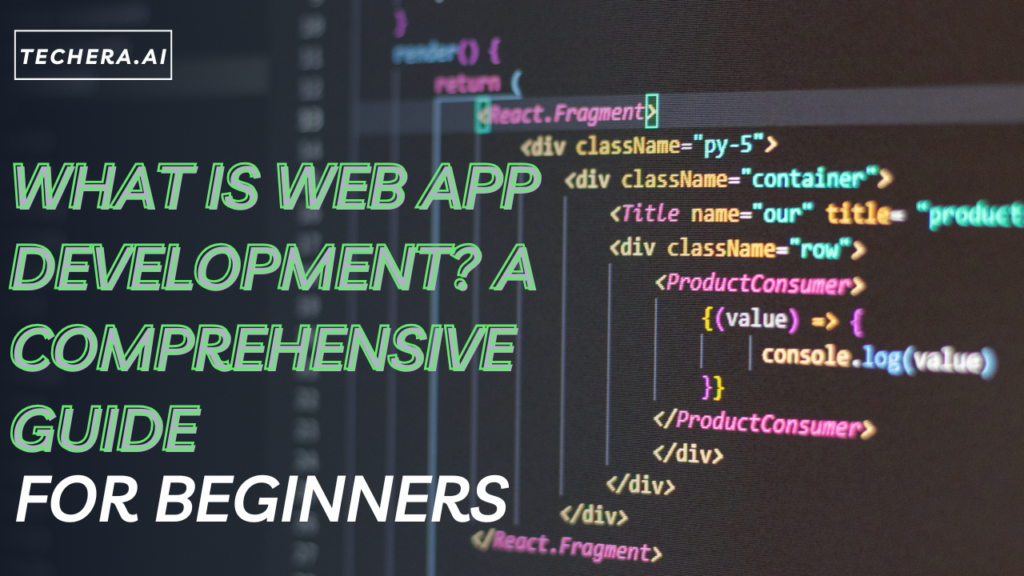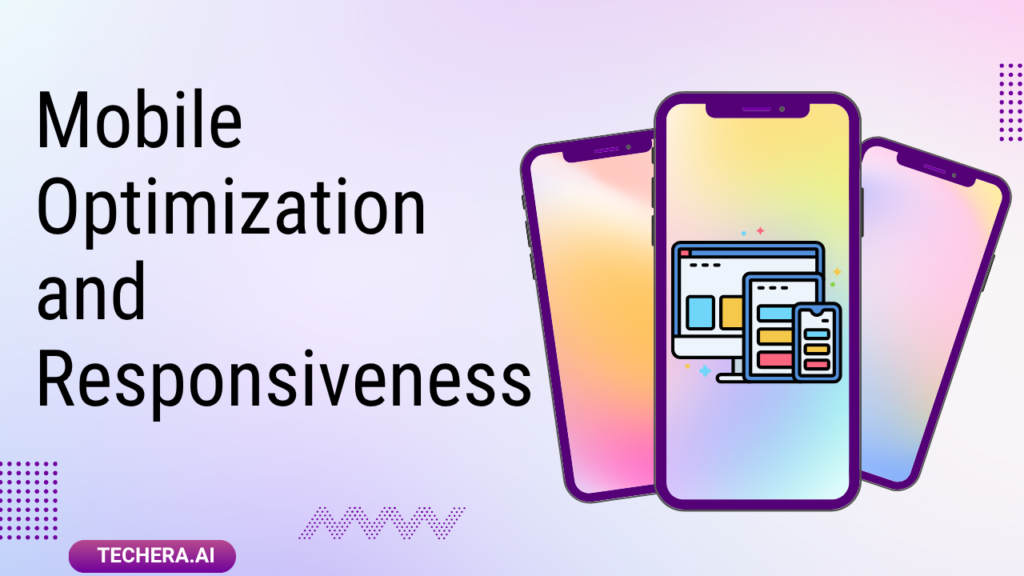
Are you new to web technologies and wondering what is web app development? This comprehensive guide is designed for beginners looking to understand the fundamentals of building modern web applications. From defining web apps to exploring their types, technologies, and development process, this post breaks down everything you need to know to get started in web app development.
Introduction to What is Web App Development
Let’s face it—our lives are practically glued to screens. Whether you’re ordering food, booking a cab, or streaming your favorite show, web apps are working silently behind the scenes. But exactly What is Web App Development? And how do developers build these powerful digital tools?
Understanding the Basics
Web app development is the process of creating application programs that reside on remote servers and are delivered to users through the internet via a web browser. In plain English? It’s the tech magic that makes things like Gmail, Canva, and Netflix work from your browser without installing anything.
Web Apps vs. Websites vs. Mobile Apps
A website presents static or informational content. A web app is interactive—it lets users do something. And while mobile apps live on your phone, web apps run in browsers across all devices. Think of it like this: websites talk at you, web apps talk with you.
Why Web Apps Matter in Today’s Digital World

Changing User Behavior
People want access to services instantly, from anywhere, on any device. Web apps deliver that flexibility. No installation. Just open your browser and go.
Business Benefits of Web Applications
They’re cost-effective, scalable, and accessible. For businesses, this means reaching a wider audience, reducing operational costs, and providing seamless user experiences.
Types of Web Applications
Static vs. Dynamic Web Apps
- Static Web Apps: Pre-made material that works well for landing sites or portfolios.
- Dynamic Web Apps: Interactive and connected to databases. Think social networks or online stores.
Single Page Applications (SPAs)
After a single load, SPAs update content dynamically without requiring a refresh. For instance? Gmail or Trello. Super fast and fluid.
Progressive Web Apps (PWAs)
PWAs blend the best of web and mobile. They can be installed on your device, deliver push alerts, and function offline.
Key Components of a Web Application
Frontend (Client-Side)
These are the buttons, text, and images that users see and interact with. Built with HTML, CSS, and JavaScript.
Backend (Server-Side)
This is the engine room. It handles logic, databases, authentication, and everything users don’t see.
Database Management
Databases store your app’s information—like user profiles, orders, or content. Common tools include MySQL, PostgreSQL, and MongoDB.
APIs and Integrations
These are the buttons, text, and images that users see and interact with. Want to embed Google Maps or accept payments? Use APIs.
Web App Development Process
Planning and Requirement Gathering
Before writing code, map out your goals, user needs, and functionality. Think of it as drawing blueprints before building a house.
Design and Prototyping
Wireframes and mockups help visualize the layout and user flow. Tools like Figma or Adobe XD are great for this.
Development and Testing
This is where the real magic happens. Developers bring the design to life and testers ensure it works flawlessly.
Deployment and Maintenance
Once it’s built and tested, it’s launched to the public. But the journey doesn’t end there—ongoing updates are key.
Essential Tools and Technologies
Programming Languages
- Frontend: HTML, CSS, JavaScript
- Backend: Python, PHP, Ruby, Node.js
Frameworks and Libraries
React, Angular, Vue.js (Frontend)
Express.js, Laravel, Django (Backend)
Development Tools
Code editors (VS Code), Git for version control, and browsers for testing.
Frontend vs. Backend Development
What Frontend Developers Do
They build what users see—layouts, animations, responsive design.
What Backend Developers Do
They write logic for processing data, managing users, and powering APIs.
Full-Stack Development Explained
Full-stack developers can do it all—frontend and backend. They’re the Swiss Army knives of development.
Hosting and Deployment
Choosing a Hosting Provider
Popular choices: AWS, Google Cloud, DigitalOcean, Vercel, Netlify.
Domain Name and SSL
A domain gives your app an address. SSL encrypts data and builds trust with users.
CI/CD Pipelines for Automation
Continuous Integration/Deployment tools like GitHub Actions or Jenkins help automate updates and streamline releases.
Web App Security Essentials
Common Threats
Beware of:
- XSS (Cross-site scripting)
- SQL Injection
- CSRF (Cross-site request forgery)
Security Best Practices
Use HTTPS, sanitize user inputs, and set proper permissions.
Data Protection and Privacy Compliance
Follow laws like GDPR or CCPA, especially if you’re collecting user data.
Mobile Optimization and Responsiveness

Why Mobile Matters
Most users browse from phones. If your app isn’t mobile-friendly, you’re losing users.
Responsive Design Principles
Use flexible layouts, media queries, and scalable images to ensure the app looks great on all screen sizes.
Testing Across Devices
Simulate mobile environments or test on real devices to avoid layout bugs and usability issues.
Maintenance and Updates
Importance of Ongoing Support
A web app isn’t “done” at launch. Bugs appear, users need help, tech evolves.
Regular Bug Fixes and Enhancements
Stay ahead by updating features, fixing issues, and listening to feedback.
User Feedback Loops
Collect insights through surveys, reviews, and support tickets to improve over time.
Web App Performance Optimization
Page Speed and Load Time
Compress assets, use lazy loading, and minimize requests to keep your app lightning-fast.
Also Read : How to Ensure Quality in Your Custom Web App Development Projects
Image and Script Optimization
Use next-gen image formats (like WebP) and minified scripts to improve load speed.
Monitoring Tools
Use Lighthouse, GTMetrix, or New Relic to track performance and find areas for improvement.
Cost of Developing a Web Application
Factors Affecting Cost
Complexity, features, design, team experience, and tech stack all play a role.
Freelancers vs. Agencies
Freelancers are budget-friendly but may lack full-service support. Agencies offer a full team but cost more.
Open Source vs. Custom Solutions
Open-source tools lower costs but may need more tweaking. Custom builds offer full control.
Future Trends in Web App Development
AI and Automation
Apps will get smarter with AI chatbots, recommendations, and predictive features.
Voice-Enabled Web Apps
Voice search and navigation are becoming more common—especially for accessibility.
Low-Code and No-Code Platforms
Now even non-techies can build functional web apps with tools like Bubble or Webflow.
Conclusion
What is Web App Development? It is at the heart of our digital lives. Whether you’re building a simple to-do list or the next big social platform, understanding the process and tools is key. For beginners, the journey might seem overwhelming—but with the right knowledge and mindset, it’s totally doable.
Frequently Asked Question
Q. What distinguishes a web application from a website?
A. A website delivers static information. A web app allows users to interact—like submitting forms, making purchases, or accessing accounts.
Q. Can someone who doesn’t know how to code create a web application?
A. Yes! Low-code and no-code platforms like Glide, Bubble, and Webflow can help you build simple web apps without writing a line of code.
Q. How much time does it take to create a web application?
A. Depending on features, complexity, and team size, it could take a few weeks to several months.
Q. Are web apps better than mobile apps?
A. Not necessarily—each has its pros and cons. Mobile apps provide stronger device connection, whereas web apps are more accessible.
Q. What makes a web app successful?
A. Great user experience, reliability, performance, and solving real problems for real users.

